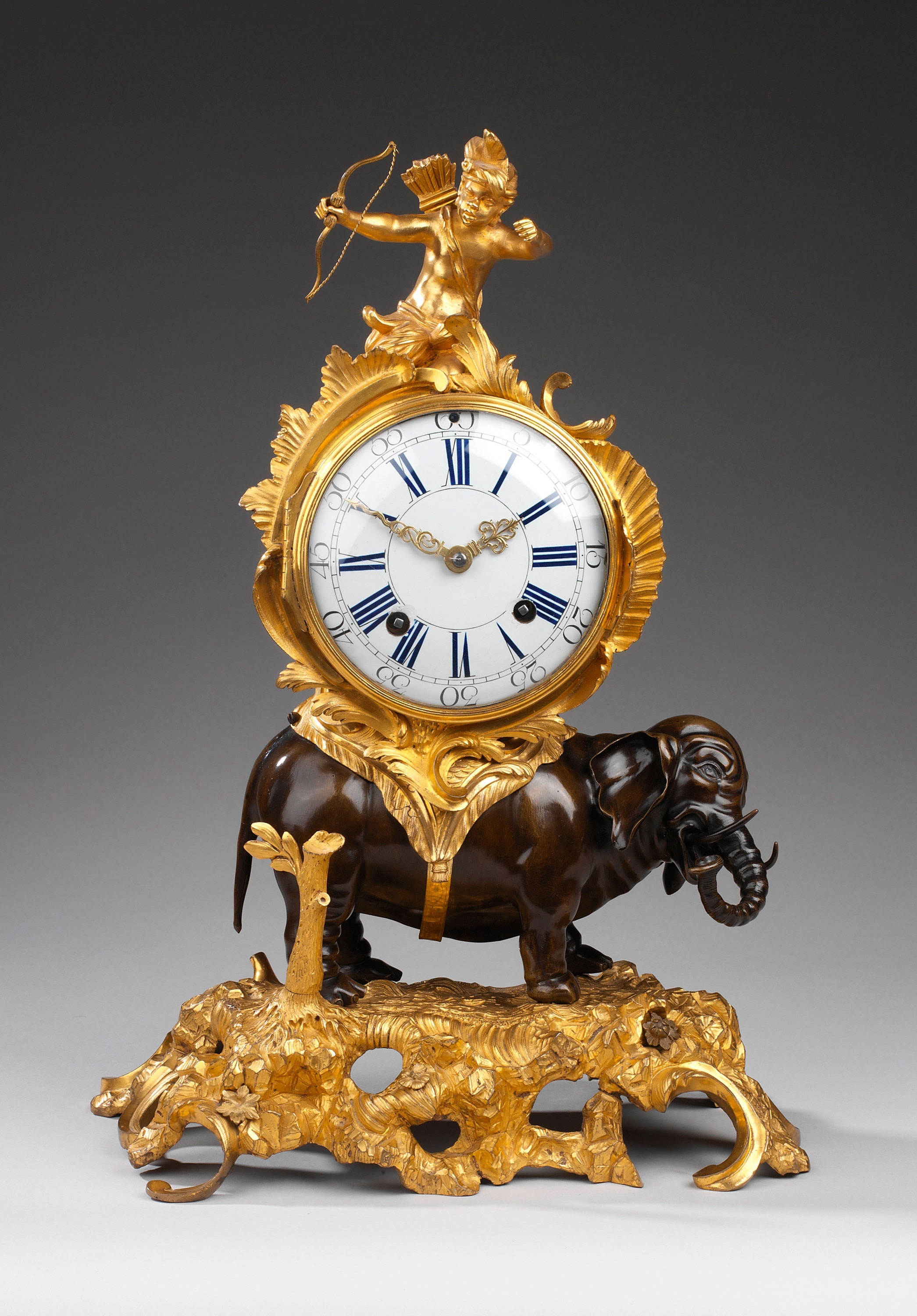
Circa 1750
Louis XV Elephant Clock by Le Fore. Circa 1750
The ormolu rockwork base is covered by ormolu flowers and has a stump of a tree beside the elephant’s right back leg. The base sits on C-scroll legs, which flow out of the rockwork. The bronze elephant stands on the rockwork base and the clock rests on an ormolu saddle secured by an ormolu band around his stomach. On top of the clock sits an Indian boy with a bow in his hand and arrows in a case on his back.

Le Fore
The back plate of the works of the clock is signed by Le Foré, Paris and the ormolu case is stamped on the rear door with Emanuel.
An identical clock, with the movement by Caranda, is illustrated in Encyclopedie de La Pendule Français by Pierre Kjellberg, p. 127 and another, signed by Dominice, is to be found in the Musée des Arts Decoratifs de Lyon.
Measurements
| DIMENSIONS | CM | INCHES |
|---|---|---|
| Width: | 33 | 13 |
| Depth: | 20 | 8 |
| Height: | 47 | 19 |